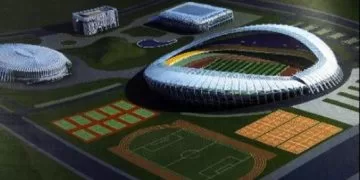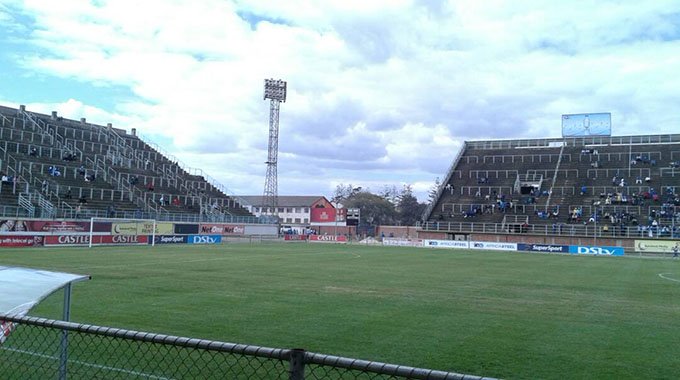The government of the Republic of Uganda through the states’ Ministry of Education and Sports has revived Ugandans hopes for the construction of the stalled Akii-Bua Olympic Stadium in Lira district, in the Northern Region of the East African country.
Earlier in the year 2020, the State Minister of Sports, Permanent Secretary, and ministry staff signed agreements with two consultancy firms. These firms were Habitant Consultants and Infrastructure Course & Management Consultants. These firms were tasked with conducting the feasibility studies, concept design and environmental/social impact assessment for the projects.
These two local firms were being represented by MD Henry Mwangi and Architect Jackson Muhwezi. This work was to be done at a cost of Shs984 million. Moreover, the funds were to be earmarked as follows: Shs560 million for Buhinga Stadium and Shs424 million for Akii Bua Stadium. These two firms had been given a timeline of three months to present their findings to help determine the construction cost of the two stadiums’ projects. The commencement of the construction of these stadiums was to be achieved through a grant from the People’s Republic of China.
Challenges Facing the Project
These two stadia projects had stalled due to lack of efficient resources for their construction. The grant from China necessitated the execution of the feasibility studies.
This Akii Bua Stadium was part of the Lango Agenda for Development that Lango people presented to President Museveni in 2012. Museveni promised to build the stadium with money being released every fiscal year. Furthermore, the stadium is being named after Uganda’s legendary Olympic gold medalist, John Akii-Bua.
In a recent turn of events, Uganda just signed a contract with the Egyptian company SAMCO National Construction Company. This contract will foresee the construction of a 20,000 seater Akii Bua Olympic Stadium in Lira city.
Project Factsheet
Name: Akii Bua Olympic Stadium
Location: Lira city
Capacity: 20,000 seater
Contractor: SAMCO National Construction Company
Cost: $129 million
Construction period: 20 months
Cost of the Akii Bua Olympic Stadium Project
This stadium project will be executed at a cost of $129 million and has been scheduled to be completed within a period of 20 months. The contract signing ceremony of this stadium project was done on Friday, December 6, 2024. This ceremony was hosted by the First Lady and Minister of Education and Sports, Mrs Janet Museveni.
Muhammad Bbale who is the Accounting Officer of NCS, signe on behalf of the Ugandan government and the National Council of Sports. On the other hand, Engineer Ibrahim Abdelaziz Mahmoud Mabrouk signed on behalf of the SAMCO National Construction Company.
At the event of the signing ceremony, Mrs Janet Museveni did the handing over of an 18.455 hectare of land title for the implementation of the stadium project. The title was accorded to Ambrose Tashobya who is the Chairperson of the National Council of Sports.
According to the State Minister of Sports, described the planned Akii Bua Olympic Stadium project as one state-of-the-art facility in Lira city.
Facilities at the Stadium
This stadium project will feature a range of facilities. These facilities will include a 20,000 seat main stadium with one athletic track. Furthermore, it will also consist of a training facility that will possess at least two changing rooms. It will also consist of a 2,000 seat multi-sport indoor stadium and a 25-meter semi-Olympic swimming pool. Moreover, other facilities will include outdoor courts for basketball, netball, volleyball, and badminton. Lastly, it will have a 1,000-vehicle parking facility.

The additional facilities will be inclusive of a fully furnished clubhouse that will be utilised for the stadium operations. Moreover, there will be a 60-room hostel and five sports pitches. Moreover, there will be a borehole that will be utilised to cut the water maintenance costs.
The stadium project site is set to have comprehensive infrastructure. This will include: roads, utilities, ICT systems and a sewerage treatment unit. Also, it will entail landscaping, perimeter fencing, and even security systems.
Hon. Ogwang did acknowledge President Museveni’s commitment to bring the stadium to reality. President Museveni pledged to construct this stadium for the people of Lango in 2010. However, the project took time to materialise.
Bringing this stadium to life will represent one of the government’s most significant achievements in the region.
Also read: Government of Uganda signs MOU with Turkish contractor for the Construction of Hoima City Stadium

